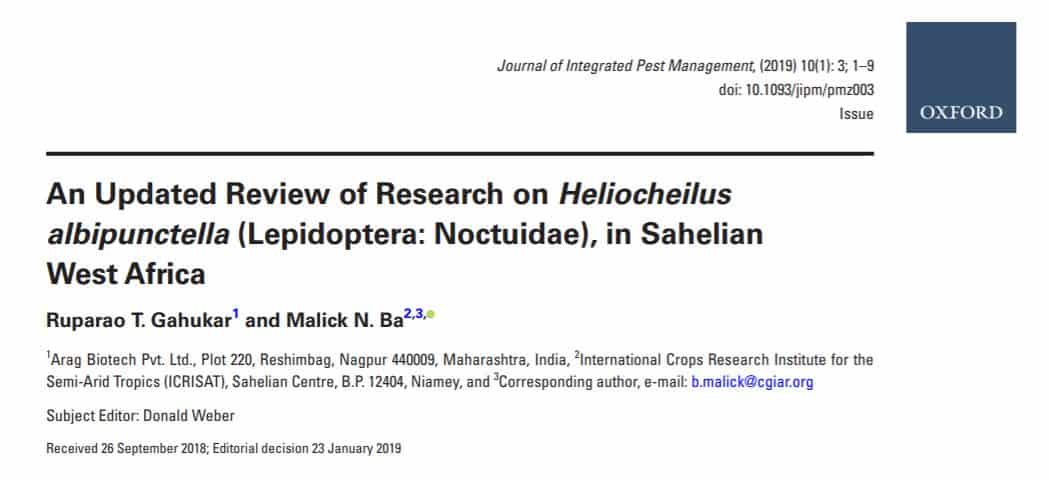Abstract
In the Sahelian region of West Africa, pearl millet, which is a major subsistence food crop supporting families’ livelihoods, is regularly attacked by the millet head miner/spike worm, Heliocheilus (=Raghuva) albipunctella de Joannis (Lepidoptera: Noctuidae). The pest infestation levels, damage ratings, and yield losses vary within and among countries because of differences in millet cultivars, the planting period, the onset time and seasonal distribution of rains, synchronization of moth flight with head development stages, and pest control practices. Egg laying by moths and the distribution of larval populations are governed by the development stages of millet head and the soil type. Rainfall patterns affect the distribution of diapaused pupae. The implications of this information for future pest control strategies are discussed in this review. Control measures including the planting of pest tolerant/resistant cultivars, the application of chemical pesticides, and the abundance of natural enemies have had significant impacts on larval mortality but have limited application. In recent years, augmentative releases of the larval ectoparasitoid, Habrobracon hebetor Say (Hymenoptera: Braconidae), have been tested in a pilot project in Burkina Faso, Mali, Niger, and Senegal. Because of the success of the program and the increasing demand for parasitoids farmers cooperatives are being engaged in producing parasitoids for the large-scale distribution of ‘ready-to-use’ bags containing braconids. This would sustain continuous availability and generate profitable businesses. To achieve this goal, farmers’ economic problems and technical challenges need to be resolved at the village level, and marketing avenues need to be established.

